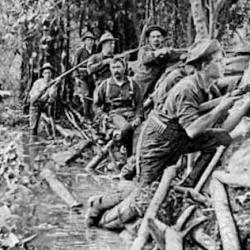When Saddam Hussein pushed into Iran in September of 1980, the US was in an ambiguous position. As Andrew Bacevich notes (America’s War for the Greater Middle East, 89-91): “As a practical matter, with the hostage crisis still ongoing and few Americans predisposed to sympathize with Iran, Washington was not unduly troubled by the prospect of Saddam Hussein subjecting that country to a drubbing. True, the United States did not want to see the Islamic Republic dismembered either. But subjected to a bit of punishment? That possessed a certain appeal.”
Saddam made quick progress, but “Tehran rejected Saddam’s offer to negotiate—on his terms—an end to hostilities. Instead, in January 1981, rejuvenated Iranian regulars employing U.S. arms acquired by the Shah and reinforced by highly motivated militias launched the first of a series of counteroffensives. As the hostage crisis that had fixated American attention finally came to an end, the Ayatollah’s forces were on the march.”
How to respond to an Iran armed with American weapons? Support Iraq, that’s how: “In February 1982, the State Department quietly ‘de-designated’ Iraq as a sponsor of terrorism. Fence-mending U.S. envoys began visiting Baghdad. Friendly messages from Secretary of State Shultz to his Iraqi counterpart emphasized the ‘very important common interests’ shared by the two countries. . . . A visit to Baghdad . . . by former (and future) defense secretary Donald Rumsfeld, acting as Ronald Reagan’s personal representative, had sealed the deal. Rumsfeld’s ceremonial handshake with Saddam, videotaped for posterity, signaled that the United States had joined the ranks of the anti-Persian (and therefore anti-Shiite) axis. The prior U.S. policy of neutrality with regard to the Iran-Iraq War was now defunct.”
In place of neutrality, a policy of giving arms to Iraq to fight Iran, which was also using US arms.










